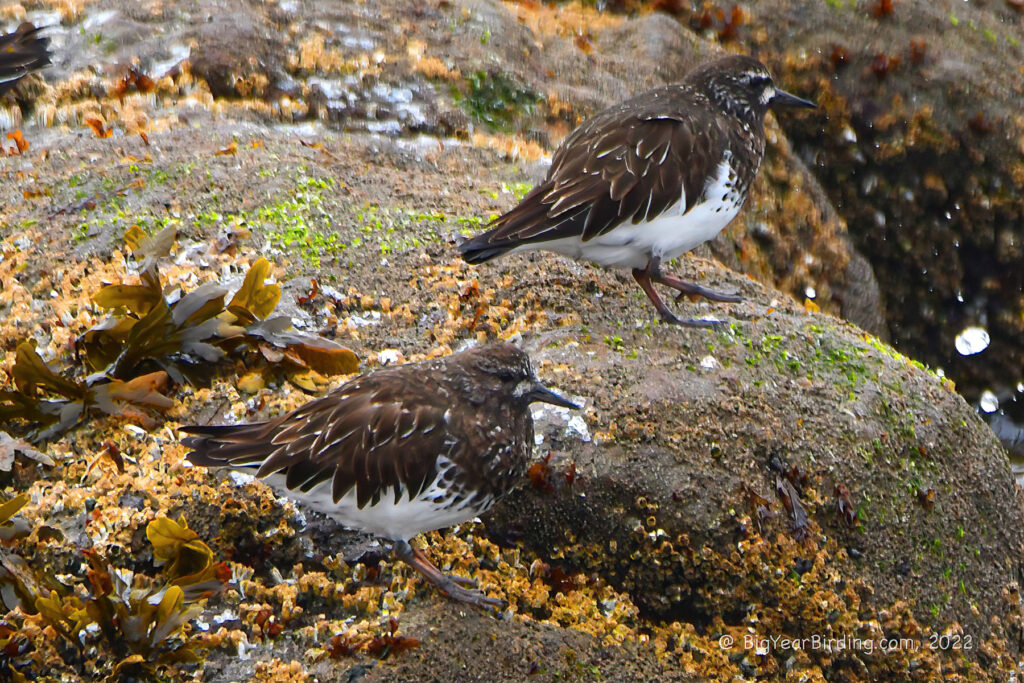
The Black Turnstone (Arenaria melanocephala) is a medium-sized shorebird that is commonly found along rocky shores and tidal pools in North America. Adults typically measure between 8.5 and 9 inches in length and have a wingspan of approximately 18 inches. They weigh between 4.2 and 6.3 ounces.
The Black Turnstone is characterized by its distinctive black head, neck, and breast, which contrasts sharply with its brownish-black back and wings. The bill is short and slightly upturned, and the legs are a pale yellow or gray color. In non-breeding plumage, the head and neck are less distinctly black, and the breast is mottled with white and gray.
The Black Turnstone breeds in the high Arctic regions of Canada and Alaska and then migrates southward to winter along the coasts of the United States and Mexico. During the breeding season, they nest in small depressions on the ground, typically close to the shoreline.
During migration and winter, Black Turnstones are often found foraging on rocky shorelines, feeding on small invertebrates such as crabs, mollusks, and barnacles. They are known to use their bills to pry open the shells of their prey. They may also be observed probing the sand and rocks for food or turning over small rocks in search of insects.
Black Turnstones are gregarious and are often found in flocks, sometimes mixed with other shorebirds such as Ruddy Turnstones and Surfbirds. They are a hardy species, well adapted to the cold and rugged environments where they make their homes. Despite their hardiness, however, Black Turnstones face a number of threats, including habitat loss, predation by introduced species, and disturbance from human activities.
